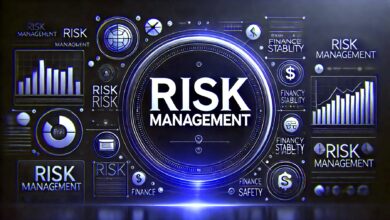Best Digital Asset Management Platform Reviews Top 7 in 2025

The digital asset landscape has evolved dramatically, and businesses worldwide are seeking robust solutions to manage their cryptocurrency and blockchain-based investments. In this comprehensive guide to digital asset management platform reviews, we’ll explore the leading solutions that are transforming how institutions, corporations, and individual investors handle their digital wealth.
Whether you’re a financial institution looking to offer crypto services, a corporation managing treasury assets, or an investment firm expanding into digital assets, selecting the right platform is crucial for success. Our detailed analysis covers security features, compliance capabilities, user experience, and pricing models to help you make an informed decision.
The stakes have never been higher in digital asset management. With global crypto market capitalization exceeding $2 trillion and institutional adoption accelerating, the platform you choose today will determine your competitive advantage tomorrow. Let’s dive into our expert digital asset management platform reviews to discover which solution aligns perfectly with your organization’s needs.
What Are Digital Asset Management Platforms?
Digital asset management platforms are comprehensive software solutions designed to help organizations securely store, manage, trade, and report on cryptocurrency and blockchain-based assets. Unlike traditional investment platforms, these specialized systems address the unique challenges of digital assets, including complex security requirements, regulatory compliance, and multi-chain asset support.
These platforms serve various stakeholders in the digital asset ecosystem. Institutional investors rely on them for portfolio management and risk assessment. Corporations use them for treasury management and payment processing. Financial service providers leverage them to offer crypto services to clients. Each platform offers different strengths, making thorough digital asset management platform reviews essential for decision-making.
The core functionality typically includes custody solutions, trading interfaces, portfolio analytics, compliance reporting, and API integrations. Advanced platforms also provide features like staking services, lending capabilities, and sophisticated risk management tools. Understanding these features through detailed reviews helps organizations identify solutions that match their specific requirements and growth objectives.
Key Features to Look for in Digital Asset Platforms
Security and Custody Solutions
Security remains the paramount concern when evaluating digital asset management platform reviews. Leading platforms implement multi-layered security architectures including cold storage solutions, multi-signature wallets, and hardware security modules (HSMs). The best solutions maintain insurance coverage for digital assets, often exceeding $1 billion in coverage.
Institutional-grade custody services should include segregated client accounts, regular third-party security audits, and compliance with SOC 2 Type II standards. Some platforms offer self-custody options for organizations preferring direct control, while others provide fully managed custody services with institutional insurance protection.
Advanced security features include biometric authentication, IP whitelisting, time-locked transactions, and real-time fraud monitoring. The most sophisticated platforms employ artificial intelligence for anomaly detection and provide detailed audit trails for all transactions and administrative actions.
Trading and Execution Capabilities
Professional trading features distinguish enterprise-grade platforms from consumer solutions. Look for advanced order types, including algorithmic trading capabilities, smart order routing, and access to multiple liquidity sources. The best platforms aggregate liquidity from various exchanges and market makers to ensure optimal execution prices.
API connectivity is crucial for institutional users requiring programmatic trading access. Modern platforms offer RESTful APIs, WebSocket connections for real-time data, and FIX protocol support for traditional finance integration. Some platforms provide white-label trading interfaces, allowing financial service providers to offer branded crypto trading experiences.
Execution quality metrics, including slippage analysis and transaction cost analysis (TCA), help organizations evaluate trading performance. Leading platforms provide comprehensive reporting on execution quality, helping compliance teams and portfolio managers optimize trading strategies.
Top Digital Asset Management Platform Reviews
Coinbase Prime – Enterprise-Grade Institutional Solution
Coinbase Prime consistently ranks among the top choices in digital asset management platform reviews for large institutions and corporations. The platform combines robust security infrastructure with comprehensive compliance capabilities, making it ideal for regulated financial institutions entering the crypto space.
Key Strengths:
- Insurance coverage exceeding $320 million for digital assets
- Regulatory compliance across 100+ jurisdictions
- Advanced API infrastructure with 99.99% uptime
- Dedicated customer success teams for enterprise clients
- Integration with traditional prime brokerage services
Pricing Structure: Coinbase Prime operates on a tiered fee structure based on trading volume and assets under custody. Enterprise pricing typically ranges from 0.35% to 1.00% for trading fees, with reduced rates for high-volume clients. Custody fees are generally 0.05% to 0.15% annually on stored assets.
Best For: Large financial institutions, corporate treasuries, and hedge funds requiring regulatory compliance and comprehensive insurance coverage.
Fireblocks – Institutional Infrastructure Platform
Fireblocks has emerged as a leading infrastructure provider, earning top marks in numerous digital asset management platform reviews for its comprehensive security model and extensive integration capabilities. The platform serves as the backbone for many financial institutions’ digital asset operations.
Key Strengths:
- Multi-Party Computation (MPC) technology eliminates private key risks
- Support for 50+ blockchains and 1,800+ digital assets
- Real-time policy engine for transaction approvals
- Comprehensive DeFi protocol integrations
- White-label solutions for financial service providers
Technology Differentiators: Fireblocks’ MPC-based security model represents a breakthrough in digital asset protection. By distributing cryptographic key shares across multiple parties, the platform eliminates single points of failure while maintaining operational efficiency. This technology has attracted major banks and financial institutions seeking institutional-grade security.
Pricing and Implementation: Fireblocks typically charges setup fees ranging from $50,000 to $200,000, plus ongoing monthly fees based on transaction volume and features utilized. While the initial investment is substantial, the platform’s security and compliance capabilities justify the cost for enterprise clients.
Also, More: Cryptocurrency Investment Guide for Beginners, Top 3 Secrets
BitGo – Pioneer in Institutional Custody
BitGo pioneered institutional digital asset custody and continues to rank highly in digital asset management platform reviews for its proven track record and comprehensive service offerings. The platform processes over 20% of all Bitcoin transactions, demonstrating its scale and reliability.
Key Strengths:
- Multi-signature security architecture with institutional insurance
- Comprehensive tax reporting and compliance tools
- Advanced portfolio analytics and risk management
- Prime services, including lending and trading
- Proven track record with zero security breaches
Service Portfolio: BitGo offers a full spectrum of digital asset services, from basic custody to sophisticated prime brokerage capabilities. The platform’s lending services allow institutions to generate yield on stored assets, while its trading services provide access to global liquidity pools.
Market Position: With custody for over 600 institutional clients globally, BitGo has established itself as a trusted partner for banks, exchanges, and investment funds. The platform’s regulatory approach, including the New York State trust company charter, provides additional confidence for risk-averse institutions.
Anchorage Digital – Federally Chartered Digital Bank
Anchorage Digital holds the distinction of being the first federally chartered digital asset bank in the United States, giving it unique advantages in digital asset management platform reviews. The platform combines traditional banking services with cutting-edge digital asset capabilities.
Key Strengths:
- Federal banking charter providing regulatory clarity
- Advanced governance tools for institutional investors
- Comprehensive staking services across multiple protocols
- Integration with traditional banking infrastructure
- Sophisticated reporting and analytics capabilities
Regulatory Advantages: The federal charter allows Anchorage to provide services that other platforms cannot, including acting as a qualified custodian under ERISA regulations. This capability is particularly valuable for pension funds, endowments, and other fiduciary investors seeking digital asset exposure.
Technology and Security: Anchorage employs proprietary technology combining hardware security modules with advanced cryptographic techniques. The platform’s governance tools allow complex approval workflows, essential for institutional investors with sophisticated internal controls.
Comparing Digital Asset Management Platform Features
Security Comparison Matrix
When analyzing digital asset management platform reviews, security features require careful comparison. Each platform implements different security models, from traditional multi-signature approaches to advanced MPC technology.
Cold Storage Solutions: Leading platforms maintain 95% or more of client assets in offline storage systems. Coinbase Prime and BitGo utilize geographically distributed cold storage with multi-signature requirements. Fireblocks’ approach eliminates cold storage through MPC technology, keeping assets accessible while maintaining security.
Insurance Coverage: Insurance protection varies significantly across platforms. Coinbase Prime offers the highest coverage levels, while BitGo and Anchorage provide substantial protection through Lloyd’s of London policies. Fireblocks partners with insurance providers to offer coverage based on client requirements.
Compliance and Regulatory Features: Regulatory capabilities differentiate enterprise platforms from consumer solutions. Anchorage’s banking charter provides unique advantages, while Coinbase Prime offers compliance across the broadest range of jurisdictions. All leading platforms provide comprehensive AML/KYC capabilities and transaction monitoring.
Integration and API Capabilities
Modern digital asset management platform reviews must evaluate integration capabilities, as most institutional users require seamless connectivity with existing systems. API quality, documentation, and support determine implementation success and ongoing operational efficiency.
API Performance and Reliability: Leading platforms maintain API uptime exceeding 99.9%, with comprehensive monitoring and alerting systems. Rate-limiting policies vary, with enterprise clients typically receiving higher limits and dedicated infrastructure. WebSocket connections enable real-time data streaming for trading and portfolio management applications.
Development Resources: Comprehensive documentation, SDKs in multiple programming languages, and sandbox environments facilitate integration projects. The best platforms provide dedicated developer support, including technical account managers for complex implementations.
Pricing Models and Total Cost of Ownership
Understanding Platform Pricing Structures
Digital asset management platform reviews must carefully analyze total cost of ownership, as pricing models vary significantly across providers. Beyond basic trading and custody fees, organizations must consider setup costs, ongoing maintenance, and potential hidden charges.
Trading Fee Structures: Most platforms employ tiered fee structures based on monthly trading volume. Rates typically range from 0.25% to 1.50% per trade, with significant discounts for high-volume clients. Some platforms offer zero-fee trading for market makers or clients maintaining substantial assets under custody.
Custody and Storage Fees: Annual custody fees range from 0.05% to 0.50% of assets under management, depending on asset types and storage requirements. Some platforms include basic custody in their service packages, while others charge separately for different security levels.
Additional Service Costs: Advanced features like staking, lending, and prime services often carry additional fees. Setup costs for enterprise implementations can range from $10,000 to $200,000, depending on customization requirements and integration complexity.
ROI Considerations for Enterprise Clients
Evaluating return on investment requires considering both direct costs and operational benefits. Leading platforms in digital asset management platform reviews often justify higher costs through superior security, compliance capabilities, and operational efficiency gains.
Operational Efficiency Benefits: Automated compliance reporting, integrated tax calculation, and streamlined operations can reduce internal resource requirements significantly. Organizations often realize cost savings exceeding platform fees through improved operational efficiency.
Risk Mitigation Value: Superior security and insurance coverage provide risk mitigation benefits that may not have immediate financial returns but protect against potentially catastrophic losses. The cost of security breaches or compliance failures far exceeds platform fees for most organizations.
Industry-Specific Platform Considerations
Financial Services and Banks
Banks and traditional financial service providers have unique requirements when evaluating digital asset management platform reviews. Regulatory compliance, integration with existing core banking systems, and comprehensive audit capabilities are paramount considerations.
Regulatory Requirements: Banks must navigate complex regulatory frameworks varying by jurisdiction. Platforms must provide comprehensive compliance tools, including transaction monitoring, sanctions screening, and regulatory reporting capabilities. Federal charters or equivalent regulatory recognition provide additional comfort for risk-averse institutions.
Core Banking Integration: Seamless integration with existing banking infrastructure reduces implementation complexity and ongoing operational overhead. APIs must support real-time balance updates, transaction posting, and customer account management functionalities.
Corporate Treasury Management
Corporations managing digital assets as part of treasury operations require different capabilities than trading-focused organizations. Digital asset management platform reviews for corporate clients emphasize security, reporting, and integration with existing financial management systems.
Treasury-Specific Features: Corporate treasurers need sophisticated cash flow management tools, automated yield optimization, and integration with existing ERP and accounting systems. Multi-currency support and foreign exchange capabilities are essential for multinational corporations.
Governance and Controls: Corporate governance requirements necessitate complex approval workflows, segregation of duties, and comprehensive audit trails. The best platforms provide configurable governance frameworks accommodating various organizational structures and approval requirements.
Hedge Funds and Asset Managers
Investment funds require sophisticated portfolio management tools, performance analytics, and prime brokerage services. Leading platforms in digital asset management platforms reviews for asset managers combine trading capabilities with comprehensive investment operations support.
Portfolio Management Tools: Advanced analytics, risk management capabilities, and performance attribution analysis help portfolio managers optimize investment strategies. Real-time position monitoring and automated rebalancing capabilities are essential for active trading strategies.
Prime Services: Lending, borrowing, and derivatives capabilities provide opportunities for alpha generation and risk management. Access to global liquidity pools and sophisticated execution algorithms optimizes trading performance.
Security Deep Dive: Protecting Digital Assets
Multi-Layered Security Approaches
Security architecture represents the most critical factor in digital asset management platform reviews. Leading platforms implement comprehensive security models addressing various threat vectors, from external attacks to internal fraud prevention.
Cryptographic Security: Modern platforms utilize advanced cryptographic techniques, including threshold signatures, secure multi-party computation, and hardware security modules. These technologies provide mathematical guarantees against unauthorized access while maintaining operational efficiency.
Operational Security: Beyond cryptographic protection, leading platforms implement rigorous operational security measures. Background checks for all personnel, segregated network environments, and comprehensive monitoring systems protect against internal threats and operational errors.
Disaster Recovery and Business Continuity: Robust disaster recovery capabilities ensure continued operations during emergencies. Geographically distributed infrastructure, automated failover systems, and regular disaster recovery testing demonstrate platform resilience.
Insurance and Risk Management
Comprehensive insurance coverage provides additional protection beyond technical security measures. The best platforms in digital asset management platform reviews maintain substantial insurance policies covering various risk scenarios.
Coverage Types: Digital asset insurance typically covers theft, loss of private keys, and operational errors. Some policies extend coverage to smart contract failures, exchange hacks affecting stored assets, and regulatory action impacts.
Claims History and Experience: Platform experience with insurance claims provides insight into real-world security performance. Leading providers maintain clean claims histories while demonstrating effective incident response capabilities.
Compliance and Regulatory Considerations
Global Regulatory Landscape
The regulatory environment for digital assets continues evolving rapidly, making compliance capabilities a crucial factor in digital asset management platform reviews. Platforms must adapt quickly to changing regulations while maintaining operational efficiency.
Jurisdiction-Specific Requirements: Different jurisdictions impose varying requirements for digital asset service providers. Platforms must demonstrate compliance with local regulations in all operating jurisdictions, including licensing requirements, capital adequacy standards, and operational controls.
Emerging Regulatory Frameworks: Proactive platforms anticipate regulatory developments and implement capabilities supporting future requirements. MiCA in Europe, comprehensive frameworks in Asia, and evolving regulations in the Americas require platform flexibility and forward-thinking compliance approaches.
AML/KYC and Transaction Monitoring
Robust anti-money laundering and know-your-customer capabilities are essential for institutional adoption. Leading platforms in digital asset management platform reviews provide comprehensive compliance tools exceeding traditional financial services standards.
Advanced Analytics: Machine learning-powered transaction monitoring identifies suspicious patterns and potential compliance violations. Real-time monitoring capabilities enable immediate responses to potential issues, reducing regulatory risk and improving operational efficiency.
Regulatory Reporting: Automated regulatory reporting capabilities reduce compliance burden while ensuring accuracy and timeliness. Platforms must support various reporting formats and submission methods required by different regulatory authorities.
User Experience and Platform Usability
Interface Design and Workflow Optimization
User experience significantly impacts platform adoption and operational efficiency. Digital asset management platform reviews must evaluate interface design, workflow optimization, and user productivity tools.
Professional Trading Interfaces: Sophisticated trading interfaces provide comprehensive market data, advanced charting capabilities, and efficient order management tools. Customizable dashboards and workspace configurations accommodate various user preferences and trading styles.
Administrative and Reporting Tools: Back-office operations require intuitive administrative interfaces and comprehensive reporting capabilities. Automated report generation, customizable dashboards, and efficient user management tools reduce operational overhead.
Mobile and Remote Access
Modern platforms must support mobile access and remote operations, particularly important following increased remote work adoption. Security considerations for mobile access require a careful balance between convenience and protection.
Mobile Security: Mobile applications must implement strong authentication mechanisms, encrypted communications, and remote wipe capabilities. Leading platforms provide full-featured mobile applications while maintaining security standards equivalent to desktop access.
Remote Operations: Comprehensive remote access capabilities enable distributed teams to maintain full operational effectiveness. VPN requirements, IP restrictions, and additional authentication measures provide security without hindering productivity.
Future Trends in Digital Asset Management
Technology Evolution
The digital asset management landscape continues evolving rapidly, with new technologies and capabilities emerging regularly. Forward-thinking platforms in digital asset management platform reviews demonstrate clear technology roadmaps and innovation capabilities.
Blockchain Technology Advances: New blockchain protocols, layer-2 scaling solutions, and interoperability protocols require platform adaptation. Leading providers maintain active development programs supporting emerging technologies and protocols.
Artificial Intelligence Integration: AI and machine learning capabilities provide opportunities for enhanced portfolio management, risk assessment, and operational efficiency. Predictive analytics, automated decision-making, and intelligent monitoring systems represent growing platform differentiators.
Market Structure Evolution
Changing market structure, including central bank digital currencies, stablecoin regulations, and traditional finance integration, will impact platform requirements and capabilities.
Institutional Infrastructure: Growing institutional adoption requires increasingly sophisticated infrastructure capabilities. Integration with traditional financial markets, prime brokerage services, and comprehensive reporting capabilities becomes increasingly important.
Regulatory Technology: RegTech capabilities, including automated compliance monitoring, regulatory reporting, and risk management, will become standard platform features rather than optional additions.
Implementation and Onboarding Process
Platform Selection and Due Diligence
Selecting the right platform requires comprehensive due diligence beyond basic digital asset management platform reviews. Organizations must evaluate technical capabilities, regulatory compliance, financial stability, and cultural fit.
Technical Due Diligence: Security audits, penetration testing results, and infrastructure assessments provide insight into platform technical capabilities. Independent security assessments and certifications offer additional validation of security claims.
Financial and Operational Due Diligence: Platform financial stability, insurance coverage verification, and operational track records indicate long-term viability. Customer references and case studies provide real-world performance insights.
Migration and Integration Planning
Successful platform implementation requires careful planning and project management. Complex integrations with existing systems demand detailed technical planning and risk management.
Data Migration: Transferring existing digital assets and associated data requires careful planning and security considerations. Leading platforms provide comprehensive migration support and testing capabilities to ensure smooth transitions.
System Integration: API integrations with existing financial systems, accounting platforms, and risk management tools require detailed technical planning. Comprehensive testing environments and staging systems facilitate integration, development, and validation.
Conclusion
The digital asset management platform landscape offers sophisticated solutions addressing diverse institutional requirements. Our comprehensive digital asset management platform reviews demonstrate that no single solution fits all organizations perfectly. Success depends on careful evaluation of your specific security, compliance, operational, and growth requirements.
Leading platforms like Coinbase Prime, Fireblocks, BitGo, and Anchorage Digital each offer unique strengths addressing different market segments. Financial institutions may prioritize regulatory compliance and traditional finance integration, while hedge funds might emphasize sophisticated trading capabilities and prime services. Corporate treasurers typically focus on security, reporting, and operational efficiency.
FAQs
What is the difference between crypto exchanges and digital asset management platforms?
Digital asset management platforms focus on institutional-grade custody, compliance, and portfolio management capabilities rather than retail trading. They provide comprehensive security infrastructure, regulatory compliance tools, and integration capabilities that exceed typical crypto exchange offerings. While exchanges prioritize trading volume and user acquisition, management platforms emphasize security, compliance, and institutional service quality.
How much do enterprise digital asset management platforms typically cost?
Enterprise platform costs vary significantly based on features, asset volumes, and service requirements. Basic institutional custody services start around $10,000 annually, while comprehensive platforms with trading, compliance, and prime services can cost $100,000 to $500,000 annually. Setup fees range from $25,000 to $200,000, depending on customization and integration requirements. Trading fees typically range from 0.25% to 1.00% per transaction.
What security measures should I look for in platform reviews?
Essential security features include multi-signature or MPC-based custody, offline storage for the majority of assets, comprehensive insurance coverage, and regular third-party security audits. Advanced platforms provide hardware security modules, biometric authentication, and real-time fraud monitoring. Regulatory compliance, including SOC 2 Type II certification and specific financial services regulations, demonstrates comprehensive security approaches.
Do digital asset management platforms support all cryptocurrencies?
Platform cryptocurrency support varies significantly, with most supporting major assets like Bitcoin and Ethereum while offering varying support for altcoins and newer tokens. Leading platforms typically support 50 to 1,800 different digital assets across multiple blockchain networks. Some platforms specialize in specific blockchain ecosystems, while others provide broad multi-chain support. Evaluate supported assets carefully based on your specific requirements.
How long does platform implementation typically take for enterprise clients?
Enterprise implementation timelines range from 3 to 12 months, depending on complexity, integration requirements, and customization needs. Basic custody services may be operational within 6-8 weeks, while comprehensive implementations with extensive system integration and custom features often require 6-9 months. Complex regulatory requirements or unique operational needs can extend timelines further.











